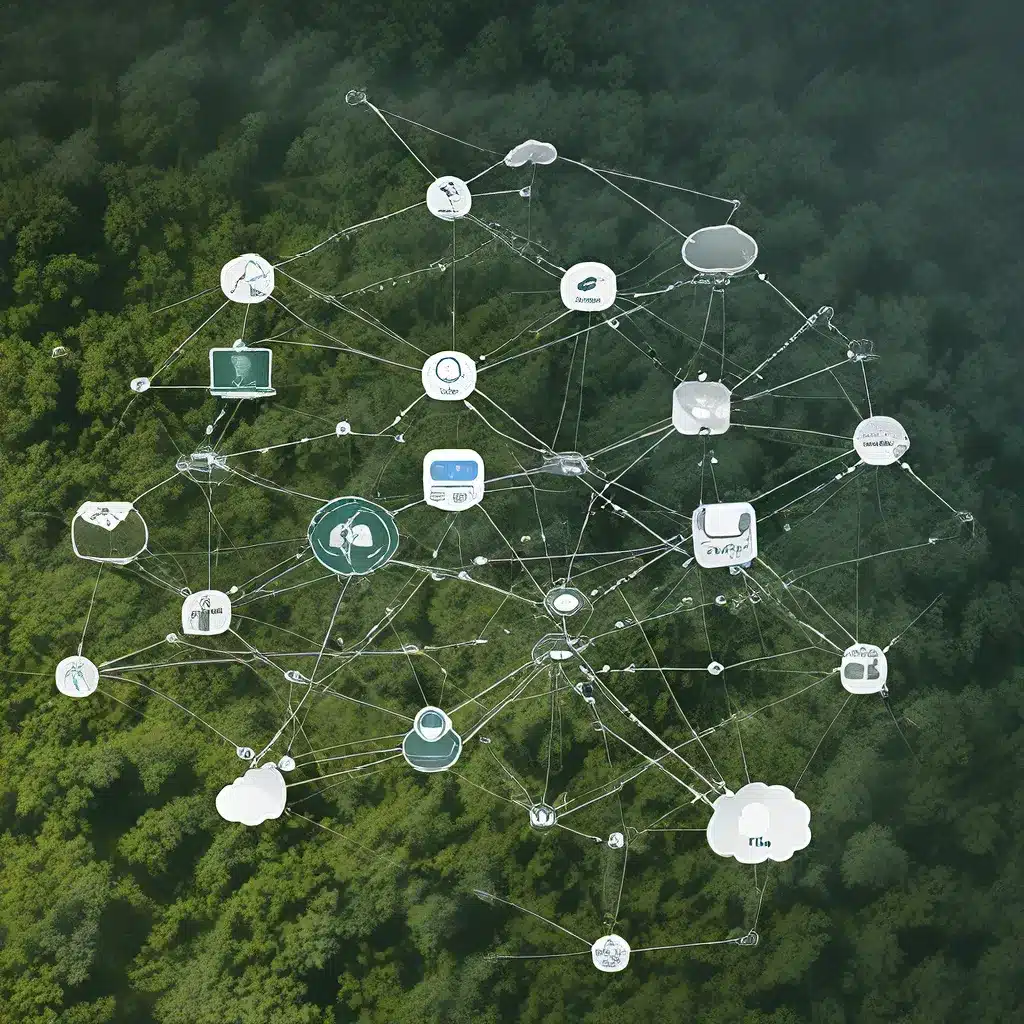
Sensor Networks and IoT: Powering the Future of Environmental Monitoring
As the world becomes increasingly interconnected, the role of sensor networks and Internet of Things (IoT) technologies in environmental monitoring has become more crucial than ever. These advanced systems, enabled by the geographic routing and multi-hop wireless communication, have the potential to revolutionize the way we collect, analyze, and respond to environmental data.
One of the key applications of sensor networks lies in disaster relief scenarios, where bursting data needs to be quickly collected and transmitted to a central sink through a multi-hop network. In these high-stakes situations, the ability to rapidly gather and disseminate critical information can make all the difference in saving lives and minimizing the impact of natural disasters.
Moreover, sensor networks are being deployed in increasingly hostile environments, where the communications between sensor nodes are undesirable or infeasible due to factors such as harsh conditions, energy constraints, or security considerations. In these scenarios, the sensors must rely on buffering the collected data, as opposed to real-time transmission, to ensure the integrity, availability, and confidentiality of the sensor data.
Distributed algorithms play a crucial role in enabling collaborative sensing within these sensor networks, particularly in environmental monitoring applications. By employing a distributed coalition formation strategy, sensor nodes can work together to efficiently select and aggregate relevant data, ensuring that the most valuable information is collected and transmitted to the central monitoring system.
Optimizing Sensor Network Architectures for Environmental Monitoring
One of the key advancements in sensor network design is the two-tiered architecture, which aims to maximize the overall network lifetime. In this approach, the network is composed of a large number of small sensor nodes (SNs) and a smaller number of more powerful cluster heads (CHs). The optimal cluster association algorithm is used to ensure that the network resources are utilized in the most efficient manner, balancing the load across the different nodes and prolonging the overall lifespan of the system.
Another important consideration in sensor network design is the ability to localize individual nodes, even when some of them are in motion. This is particularly critical in applications where it is not practical or cost-effective to use GPS or dedicated anchor nodes for position tracking. Innovative distributed algorithms have been developed to address this challenge, enabling reliable node localization without the need for extensive infrastructure.
Tackling Sensor Network Troubleshooting and Maintenance
While sensor networks offer numerous benefits, the task of troubleshooting these systems can be notoriously difficult, due to factors such as resource constraints, unreliable components, and unpredictable natural phenomena. To address these challenges, researchers have developed tools like Sensor Network Troubleshooting System (SNTS), which provide a comprehensive framework for identifying and resolving issues within the network.
Moreover, the deployment of sensor networks in real-world settings can be a labor-intensive and cumbersome process, as environmental factors often trigger problems that are difficult to diagnose due to the limited visibility of the network state. Innovative approaches have been developed to address these challenges, empowering network administrators with the tools and insights they need to effectively monitor and maintain their sensor network infrastructure.
Enabling Collaborative Sensing and Data Aggregation
One of the core capabilities of sensor networks is their ability to detect events, identify measurement errors, and infer missing readings in ecological applications. By employing distributed algorithms that account for the non-stationary nature of environmental data streams, sensor networks can provide accurate and reliable information, even in the face of changing environmental conditions.
Additionally, the spatiotemporal nature of data traffic in environmental monitoring and surveillance applications has led to the development of energy-efficient data collection protocols that leverage network-controlled mobile basestations (MBs). These innovative approaches optimize the data collection process, minimizing energy consumption and ensuring the efficient operation of the sensor network.
Securing Sensor Networks and IoT Devices
As sensor networks and IoT devices become more pervasive in environmental monitoring applications, the security of these systems has become a critical concern. Hostile environments and the potential for unauthorized access pose significant risks to the integrity, availability, and confidentiality of the sensor data.
To address these challenges, researchers have developed probabilistic sensor tasking algorithms that enable camera sensor networks to detect intruders moving through a monitored area. By leveraging the inherent capabilities of the sensor network, these algorithms can provide a robust and effective security solution without the need for extensive infrastructure.
Moreover, the structured and dynamic information push and pull protocols for wireless sensor networks have been studied to ensure the secure and efficient dissemination of data throughout the network. These protocols consider the impact of various information demand characteristics on the overall system performance, ensuring that critical data is delivered to authorized users while maintaining the necessary security measures.
Advancing Environmental Monitoring with Sensor Networks and IoT
As the field of sensor networks and IoT continues to evolve, the applications in environmental monitoring are poised to become increasingly sophisticated and impactful. From disaster relief and hostile environment monitoring to event detection and data aggregation, these technologies are transforming the way we understand and respond to the world around us.
By leveraging distributed algorithms, optimized network architectures, and robust security measures, sensor networks are enabling a new era of collaborative sensing and data-driven environmental monitoring. As the sensor networks and IoT ecosystem continues to advance, the potential to unlock a deeper understanding of our planet and its processes has never been greater.